You just want to get a good night’s sleep. After turning in at a reasonable hour, you close your eyes and wait to feel your body relax into slumber. Instead, like the night before (and the one before that), you find yourself tossing and turning. You watch the hours pass by. Midnight, 1 a.m., 2 a.m. Finally, just before the sun rises, your body gives up the fight and you fall asleep.
If you’ve been struggling to get the rest you so desperately want and need, you are not alone. About 1 in 3 American adults report not getting enough sleep, according to the Centers for Disease Control and Prevention. However, that number climbs as people age. As many as 60% of people 65 and older have complaints about their sleep quality.
Not only is it frustrating to struggle to fall or stay asleep but it can affect your overall health, cognitive function, and quality of life.
Creating a sleep-friendly routine that prioritizes healthy habits throughout the day can help ease those bedtime struggles. Integrating regular exercise and warm water therapy in an H2X Fitness Swim Spa can be particularly beneficial, helping you establish a holistic approach to improving your sleep.
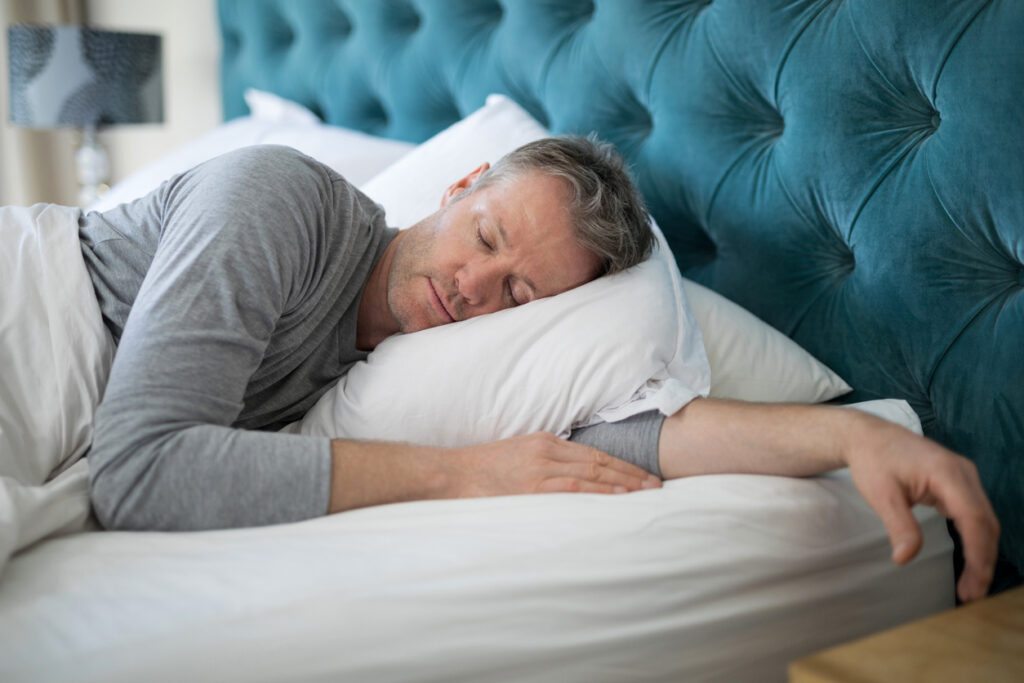
The sleep-aging connection
You’re finally retired. After years of working, you can do what you’ve dreamed of: saying goodbye to an alarm and hello to more sleep.
However, the reality of retirement can be a rude awakening.
Maybe you’ve discovered that you’re still waking up early, even without an alarm. You’re only getting six hours of sleep on a good night, instead of the eight that you need (and want).
If this sounds familiar, you’re not alone. As we age, our sleep patterns undergo subtle shifts. These changes can leave many adults over 55 feeling frustrated and fatigued. But why does this happen?
Frequent wake-ups
If you find yourself joining the midnight wake-up club more often, you’re in good company. The National Sleep Foundation reports that older adults are more likely to experience frequent nighttime awakenings, with 40% of seniors reporting waking up at least three times per night.
Changes to internal clock
Ever notice you’re turning into an early bird? After years of waking up at 8 a.m., you started to wake up at 6 a.m. … and then 5:30 a.m. … and then you started to see “4” on your bedroom clock.
As you age, your internal clock can often shift so you have an earlier wake time. It might mean that you are sipping your coffee as the sun rises. For about 15% of people, it can mean waking up in the wee hours of the morning.
Known as advanced sleep phase syndrome, this shift in sleep can cause you to feel sleepy much earlier in the evening, perhaps around dinnertime or shortly after. You may then wake up between 2-5 a.m. This shift can be quite noticeable, with some older adults dozing off when others are just sitting down to dinner — and waking up when most people are still in deep sleep.
Melatonin production
As we age, our natural production of a crucial sleep hormone starts to decline. We’re talking about melatonin, often which helps regulate our sleep-wake cycle.
Research shows that after we reach age 40, our melatonin levels begin to decrease noticeably. We’re looking at a 10%-15% reduction every decade. This gradual decline can help explain why many find it harder to fall asleep or stay asleep as we get older.
Chronic conditions
Adults need about 7 to 9 hours of sleep, no matter how old (or young) they are. However, conditions such as arthritis, restless legs syndrome, and sleep apnea can disrupt your sleep. This can create a vicious cycle where poor sleep leads to increased pain and discomfort, which in turn makes it even harder to get a good night’s rest.
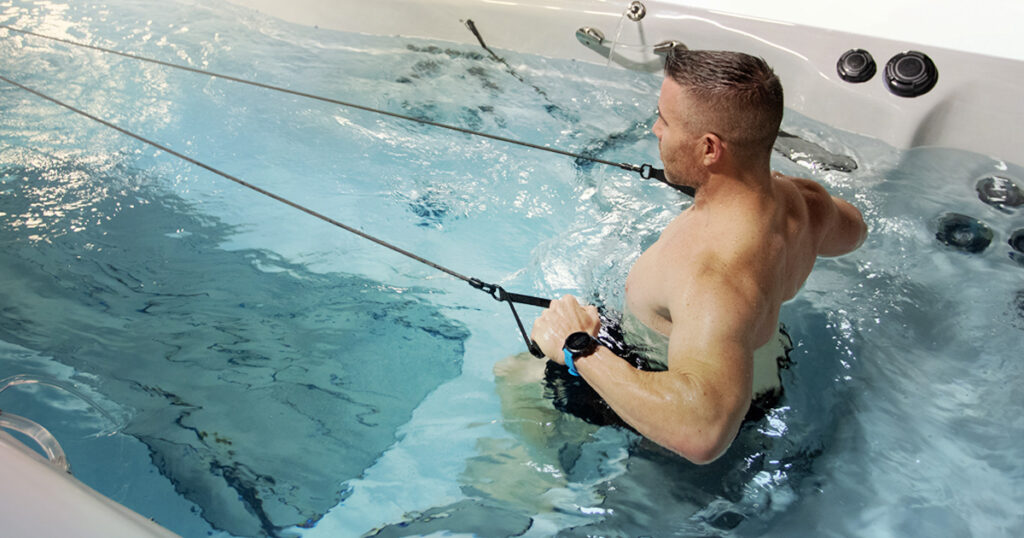
Creating a sleep-friendly routine
When you consistently get good sleep, you might notice sharper memory and quicker thinking during the day. Your mood could improve, making you more resilient to stress and more patient with loved ones. Physically, better sleep can boost your immune system, helping you fend off those pesky colds. It might even help you manage your weight, as poor sleep is linked to increased appetite and cravings.
So what does a sleep-friendly routine look like?
Morning exercise session
Start your day with a low-impact workout in your swim spa. Engaging in 30 minutes of water-based exercise can help wake up your body, improve circulation, and boost your mood.
More than that, research has shown that regular exercise can significantly improve sleep quality in older adults. A study published in the Journal of Sleep Research found that older adults who engaged in regular physical activity fell asleep faster, slept longer, and experienced better overall sleep quality. The benefits of exercise extend beyond sleep, contributing to better cardiovascular health, weight management, and mental well-being.
You can go for a walk, practice yoga, or even take a morning swim. Whether you’re a lifelong swimmer or enjoy a casual dip, starting your day by exercising in the water can be particularly beneficial. The buoyancy of water reduces the impact on joints, making it an ideal environment for those with arthritis or other musculoskeletal issues. The resistance provided by water helps to build strength and improve cardiovascular fitness without the need for high-impact activities that can lead to injury.
But it’s not always easy to make it to the pool, even with a less-structured schedule in retirement. Between the hassle of getting there, unpredictable weather, or simply wanting some privacy, it can be challenging to go as often as you’d like.
H2X Fitness Swim Spas make it more convenient and comfortable to stay active in retirement. These swim spas combine the benefits of swimming and aquatic exercise with the convenience and comfort of a home spa. You can start your day swimming “laps,” walking against the endless water current, or using water aerobics equipment for strength training exercises. The adjustable current in H2X Fitness Swim Spas allows you to customize your workout intensity, making it suitable for all fitness levels.
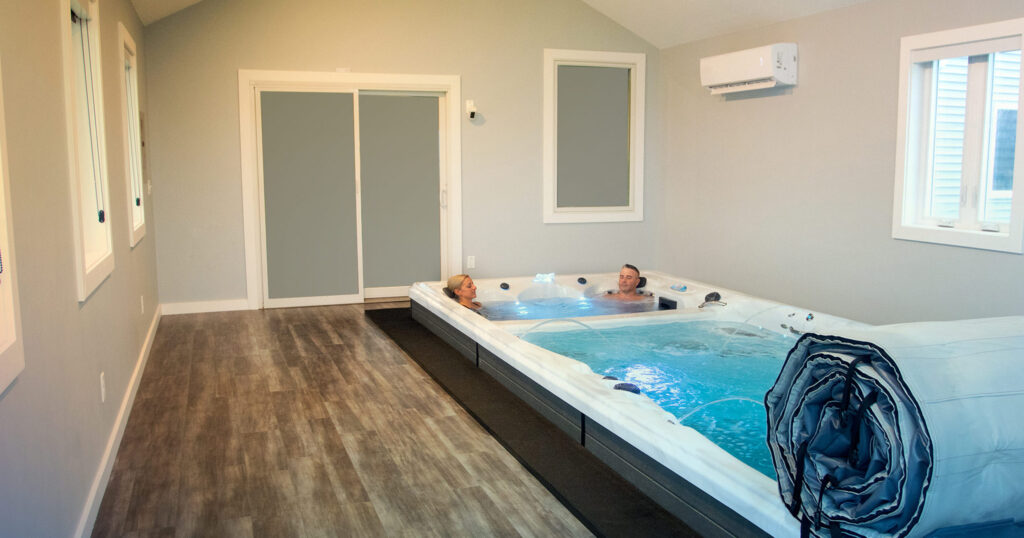
No-nap downtime
Your sleep patterns have changed since you retired. There’s no urgency to going to bed at a certain time, and you can sleep as late as your body will let you. Another perk? You can take afternoon naps.
If you find yourself curling up on the couch at 2 o’clock in the afternoon, you might be among the up to 60% of older adults who take daytime naps. One study found that people who are retired nap an average of 48 minutes more a week than when they were working. Napping can be seen as a way to catch up on missed sleep or recharge after lunch.
Researchers have found that napping for 30 minutes or less can help with cardiovascular health and cognitive function. However, longer naps might be an early sign of health conditions like dementia.
The National Council on Aging recommends keeping naps to an hour or less and taking them earlier in the day. Longer naps or those taken later can make it harder to fall asleep at night and disrupt your natural sleep-wake cycle.
Instead of taking a nap in the afternoon, consider taking time for relaxation. Designed for year-round use, an H2X Swim Spa is a perfect spot to do some stretching, light swimming, or simply enjoying the buoyancy of the water. This mid-day session can help to reduce any stiffness or discomfort that may have built up during the day, keeping you comfortable and relaxed.
Evening soak
Have you found that it’s harder to get to sleep and stay asleep? A warm soak in an H2X Fitness Swim Spa, which can be set up to 99 degrees, can help to relax muscles, reduce tension, and promote a sense of calm — all of which are conducive to better sleep.
A study conducted by the University of Texas found that taking a warm bath about 90 minutes before bedtime helped people fall asleep faster and experience better quality sleep.
The heat from the warm water raises your body temperature, and the subsequent drop in temperature after you exit the spa signals to your body that it is time to sleep. This natural thermoregulatory process can help to regulate your circadian rhythms, making it easier to fall asleep and stay asleep.
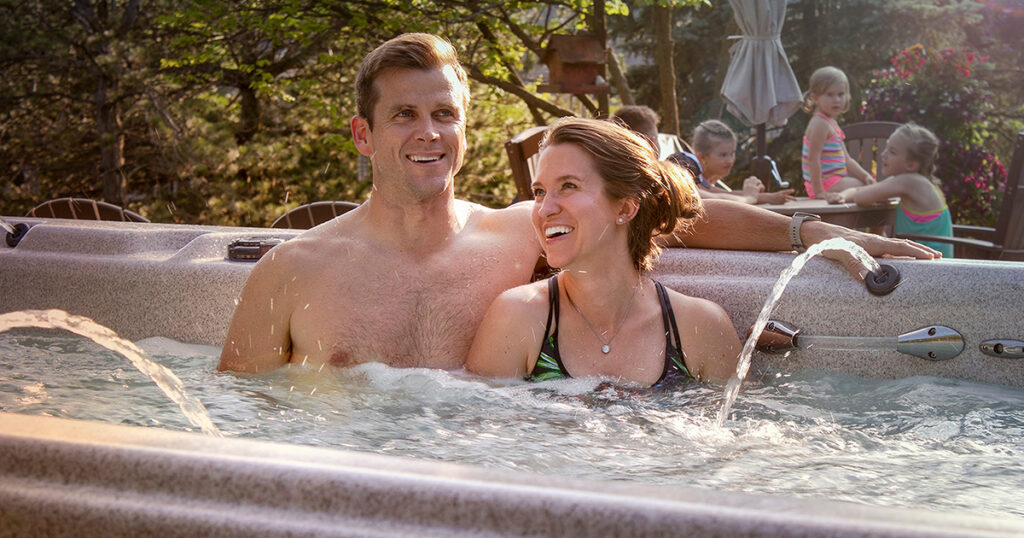
Consistent sleep schedule
Retirement means you have newfound free time — likely 40 hours (or more) each week. Now you can travel, enjoy time with family, and relax. But having some structure is still important, especially for good sleep hygiene and a nighttime routine. A consistent routine can help you get the restful sleep you need and feel your best.
Establish a consistent routine that includes your swim spa sessions. Going to bed and waking up at the same time every day, along with regular exercise and relaxation, will help to reinforce your body’s natural sleep rhythms.
Remember, while sleep changes are a normal part of aging, chronic sleep problems aren’t. If you’re consistently having trouble sleeping, it’s important to speak with your health care provider to rule out any underlying issues.
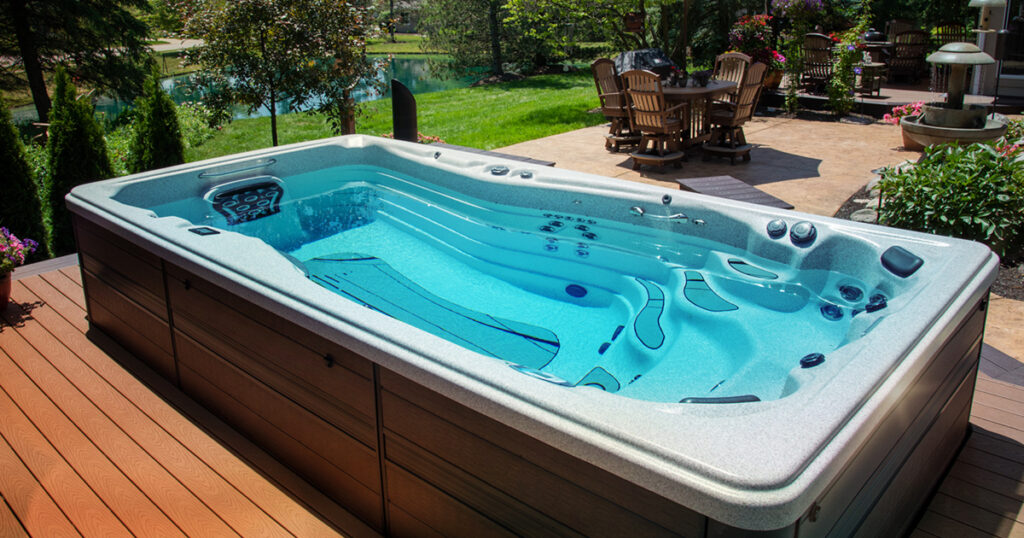
Invest in a backyard pool alternative
Do you want to be able to swim, exercise, and relax at home? Having an H2X Fitness Swim Spa by Master Spas allows you to swim on your schedule while adding a fun factor to your backyard. Click here to find out more about the benefits of hydrotherapy and relaxing in a swim spa. Or, contact your local Master Spas retailer to learn more about swim spa ownership. Wondering how much a swim spa costs? You can request a quote here.


